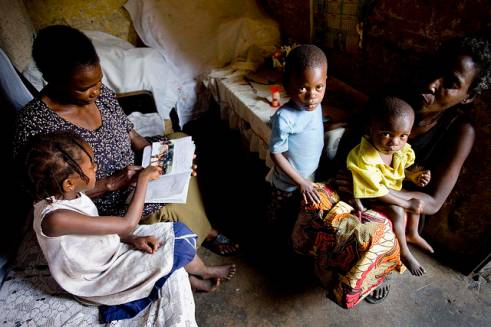By Sarah Marzouk
On 1 December, we mark the 25th anniversary of World AIDS Day, an opportunity to reflect on the progress we have made this year as well as support the efforts to tackle the HIV epidemic around the world.
In 2013, we have seen significant progress in addressing a core challenge of the HIV response: The lack of data on people aged 50 and over living with and affected by HIV. We have consistently advocated for changes to the tools used to collect data on HIV and to the guidelines, analysis and reporting undertaken at the global level.
Ageing of the HIV epidemic
On 1 November, UNAIDS published “HIV and Aging: A special supplement to the UNAIDS report on the global AIDS epidemic 2013”. The supplement provides an estimate of the number of people aged 50 and over living with HIV globally. And for the first time, it estimates the proportion of positive people who are aged 50 and over in each region of the world.
HelpAge CEO Toby Porter welcomed the report: “It highlights some of the key challenges older people living with HIV face; from accessing HIV testing, to the health implications of living with HIV in older age. However, what we need now is a targeted and accelerated response. The number of older people living with HIV is rapidly increasing and will continue to do so.”
Indeed, in Kenya the 2012 AIDS Indicator Survey shows the highest HIV prevalence is in the 45-54 age groups, while declining prevalence is seen in younger people.
Similarly, in South Africa prevalence in people aged 55-59 has increased rapidly between 2008 and 2012, from 7.7% to 12% among women, and from 6.2% to 6.9% in men. With these trends predicted to continue over the coming years, the urgency for a response that meets older people’s needs is clear.
Including older men and women in HIV data
This World AIDS Day, HelpAge is launching its own publication “Including older women and men in HIV data”. The briefing highlights:
- how older people have been excluded from data,
- why a change in data collection is critical now,
- the implications of including older people in national household surveys,
- recommendations for policymakers at national and global level.
HelpAge HIV Policy Advisor Rachel Albone notes: “The briefing looks explicitly at Demographic and Health Surveys, (DHS) a key source of HIV data, and expanding them to include people aged 50 and over.
“An upcoming review of the survey provides us with a crucial opportunity to ensure older people’s inclusion and subsequently, increased data on the nature and scale of the HIV epidemic among the older age group.”
Delivering services to older people affected by HIV
HelpAge has also had an important year in delivering services to older people affected by HIV and AIDS.
As outlined by UNAIDS, accessing testing has been a major challenge for older people; something HelpAge has addressed. As our HIV Portfolio Manager in Kenya, Wamuyu Manyara highlights: “In 2008, we found that low numbers of older people in our programme communities had been tested for HIV.
“To address this challenge we worked with older peer educators to raise awareness of older people’s risks of infection and the importance of knowing their status. We also worked with government health providers to offer HIV testing to older people within their communities.
“As a result we saw testing levels increase. For example, in Kenya only 15% of older people had been tested in 2008, but this increased dramatically to 84% this year.”
